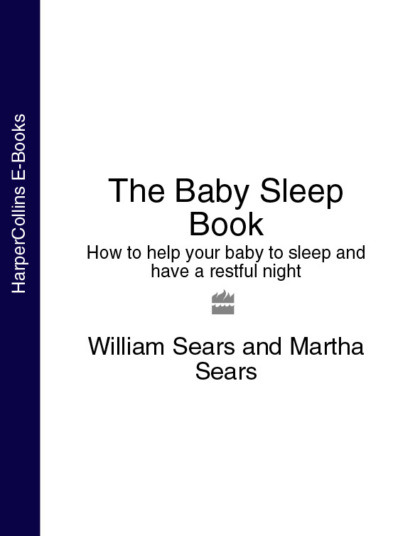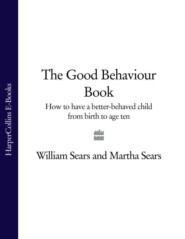По всем вопросам обращайтесь на: info@litportal.ru
(©) 2003-2024.
✖
The Baby Sleep Book: How to help your baby to sleep and have a restful night
Автор
Год написания книги
2018
Настройки чтения
Размер шрифта
Высота строк
Поля
It’s a good idea to eat tryptophan-containing foods with complex carbohydrates. The carbohydrates help usher more tryptophan into the brain so it can manufacture more sleep-inducing neurotransmitters. Without carbohydrates to help, other amino acids that ride along with tryptophan, such as tyrosine, can perk up the brain and keep the child awake. High-protein, low-carbohydrate menus are best saved for breakfast, when it’s time for the sleeping brain to wake up and be busy.
Carbohydrates all by themselves are not good sleeper foods. There’s no tryptophan in these foods, and sugary, junk-food carbohydrates eaten all by themselves can set you up for a blood-sugar roller coaster ride. First, you get a jolt of energy from the sugar. A couple hours later, when your blood sugar falls, causing your body to release stress hormones, you feel restless. If you’re sleeping, you may wake up.
Calcium is another “sleeper” nutrient. It helps the brain use tryptophan to manufacture melatonin. Magnesium, another sleep-inducing mineral, is found especially in whole-grain cereal, sunflower seeds, spinach, tofu, and nuts.
So what makes a good bedtime snack? The best sleepy snacks contain protein, healthy carbohydrates, and some calcium and magnesium. So how about grandma’s classic bedtime snack of homemade biscuits and milk? The glass of milk contains tryptophan, healthy carbohydrates (lactose), and calcium. Homemade oatmeal biscuits contain healthy carbohydrates to partner with the proteins in the milk.
Best snooze foods
Here are foods that contain significant amounts of the sleep-inducing amino acid tryptophan. Try these for dinner and bedtime snacks.
dairy products: cottage cheese, cheese, milk
soy products: soy milk, tofu
seafood
meats
poultry
whole grains
beans
hummus
lentils
hazelnuts, peanuts (Nuts and seeds are not safe for children under three; try nut butters, or grind up nuts into a fine meal and sprinkle them on other foods)
eggs
Don’t worry, be sleepy!
Stress stimulates the body to release cortisol, which can deplete the brain of tryptophan. This is one of many biochemical ways in which stress keeps you awake. So enjoy those bedtime snacks in a stress-free, peaceful environment, to get the maximum benefit from tryptophan.
Best sleepy snacks
For good snacks to sleep by, try these protein-carbohydrate-calcium combinations:
milk and whole-grain biscuit (e.g. raisin-oatmeal)
milk and whole-grain cereal
a hard-boiled egg and a slice of whole-grain toast
a half peanut butter sandwich on whole-grain bread (see age advice above)
homemade apple pie and ice cream (our favourite)
tofu and fruit The above snacks contain just enough carbohydrates, calcium, and protein to relax rather than perk up the brain. It takes about an hour for all these sleep-inducers to reach the brain.
Best dinners for sleep
The foods you serve your child at dinner can help him get to sleep, too. Here are some dinners to help wind down your family. (These foods, in small portions, make great bedtime snacks too, even if they’re a bit unconventional.)
chilli with beans, not spicy
sesame seeds (rich in tryptophan) ground and sprinkled on salad with tuna chunks, and whole-wheat crackers
tuna salad on whole wheat sandwich
tofu stir-fry with hazelnuts
scrambled eggs and cheese
meats or poultry with veggies
hummus with whole-wheat pita bread
seafood, pasta, and cottage cheese
whole grain pasta with parmesan cheese
faqs about toddler sleep (#ulink_2eca6c27-c047-5c5c-a916-ce6d2f791078)
You’ll run into many detours on the road to getting your toddler to sleep. Some of them can exhaust your patience. If you can manage to hang on to your sense of humour, some are actually pretty funny. Here are the most common questions we get asked in our medical practice and on our website:
Bedtime procrastinator
We begin putting our 2½-year-old to bed at 8pm, but he has a load of excuses that prolong the routine: he needs a drink of water, he has to go to the toilet, he asks us to ‘read again (and again)’ … Sometimes it takes me an hour to an hour and a half to get him to sleep. We’re tired after a day’s work, and we often could fall asleep before he does. Where should we draw the line?
The main reason kids procrastinate at bedtime is stress. They aren’t worried about the actual getting-ready-for-bed routine. They are anxious about the very end of the routine – when you leave them alone to fall asleep. Fear of going to bed alone will make the whole routine stressful and your child is much more likely to act out in any way he can to delay the impending alone-in-bed time. This makes the whole bedtime hour less enjoyable for you too.
Get behind the eyes of your child and understand bedtime procrastination from his viewpoint. Ask yourself, “If I were my child, what would I need from my parents at bedtime?” Answer: my parents! Instead of regarding bedtime as a chore, think of this prolonged going-to-bed ritual as quality time you spend with your child. This may be the only time during the whole day when he has your focused attention, so of course, he wants to make the most of it and reconnect with you. If you can relax and enjoy this time, you will both be happier.
Parents in this situation will usually need to take a step backwards and spend a few weeks or months sitting by their child’s bedside using the fade away technique introduced above.
This can be difficult, since you are tired and your tired child is being very demanding. You may be wanting some time with your partner or time just for yourself. Take it as a compliment that your child enjoys this special time with you. We worry more about babies who are not so “demanding” of their parents at night. And keep it in perspective – those early years fly by quickly.
Sears’ Sleep Tip: It’s all about attitude. Instead of dreading prolonged bedtime rituals, view them as treasure times that you are storing up so that you can all sleep better later on.
Develop a consistent bedtime ritual using the tips from earlier in this chapter. On nights when you know you don’t have enough patience for the whole routine, call in a crutch. Listen to an audiotape of your child’s favourite story, or watch a calm video together. You can snuggle up on the couch with your child, enjoying bedtime closeness without expending a lot of energy. Many nights when Matthew was three to four years old he and I snuggled together in a beanbag and he dozed off to Lady and the Tramp. Meanwhile, Martha was free to be with baby Stephen.
tuck me in, dad
Little minds are in a receptive state at bedtime. Bedtime stories can help a child reflect on her life, and you can tuck a little teaching into the stories you tell. Events from your growing-up years are a great source of bedtime tales.







